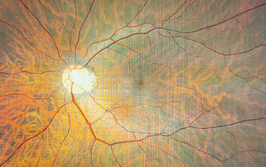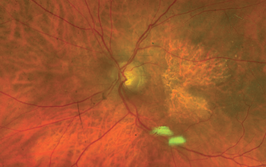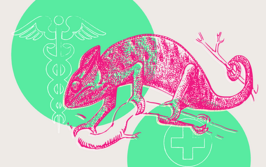It’s Our Duty to ‘Do’ Diversity
A diverse workplace is worth having – so how do we go about achieving it?
There should be no place for discrimination. My family has experienced it – both maternal and paternal grandparents had to flee Armenia during the Ottoman Empire expansion when Christians were being ethnically cleansed; it’s why I grew up in Lebanon before moving to the US at the age of 12.
I’ve experienced it too – one of the most memorable examples was when I bought the practice that became Matossian Eye Associates. After completing my training program, I joined a practice for a year, and learned how things should and, importantly, how things shouldn’t be done. I wanted to start my own practice and do things in a very different way. I found two brothers, practicing EENT – eye, ear, nose and throat – and bought the ophthalmology section from them. They were horrified that a woman was buying their ophthalmology practice – and so shocked that they refused to honor my signature, when we were finalizing the contract in front of our respective attorneys, because I was a woman! My husband (who has nothing to do with medicine, let alone ophthalmology) had to countersign. This was New Jersey – in 1987.
The benefits of having a diverse workplace are now well-known: a collection of people with different backgrounds, experiences, points of view and approaches to the tasks at hand is far better than one that could be described as a monoculture. The question is: how do we ensure a more diverse workplace, and that no person is discriminated against, left behind, or treated to their detriment? The answer lies in mentorship and support.
I recently attended the Women in Ophthalmology meeting in California, where women ranging from medical students to department chairs, residents to private practice owners were present. The diversity led to wonderful dialogue about factors important to each of these groups; we all learned from each other and gained an understanding of the breadth, depth and complexity of our field. There were presentations of clinical studies, scientific posters, and talks on a myriad of topics. For example, the latest meeting had presentations on how to say, “no,” on how to negotiate a contract, and on medical procedures, such as cataract surgery and intravitreal injections.
These meetings give women a podium to voice their concerns, experience camaraderie, and learn how to address certain topics, including unequal pay, how to network with industry, achieve chairmanship position, get better grants and start a solo practice. They give women a forum to discuss these issues and hopefully to come up with options and positive solutions, with the idea of helping them understand what is needed to get invited onto the panels, or to be a speaker, moderator, or a presenter.
Over the last thirty years I have definitely seen more women coming into ophthalmology, and it’s been such a welcome change. When I started out, there weren’t many women ophthalmologists at all, let alone women chairmen, or women who owned practices or were senior partners in practices. Now, the residency program intake in US ophthalmology departments comprises about 50 percent women, and it’s much more common to see women who are departmental chairmen or who have leadership positions in large organizations, including industry. Not only are there more women in the field, but ophthalmology has changed in many other ways; when I started, most women ophthalmologists were either comprehensive ophthalmologists or pediatric ophthalmologists – it was almost unheard of for women to go into retina, ocular trauma or anterior segment surgery. But now that’s completely changed, and we see many women in all of these sub-specialties within ophthalmology. And I will say that this trend has been for the benefit of our profession – and our patients.
www.matossianeye.com
Cynthia Matossian is founder and Medical Director of Matossian Eye Associates, Mercer County, New Jersey, and Bucks County, Pennsylvania, USA. She specializes in cataract and refractive surgery, as well as focusing on dry eye and providing the latest diagnostic and treatment options to optimize the ocular surface. A graduate of the Hershey Medical Center of Penn State University, Matossian completed her Residency in Ophthalmology at George Washington University Medical Center in Washington, DC. She founded Matossian Eye Associates in 1987. Matossian is recognized as one of America's top Ophthalmologists by the Consumer Research Bureau, and has been named as a Surgeon of Excellence by American Medical Optics for being on the cutting edge of cataract technology.













